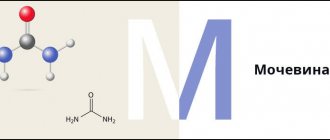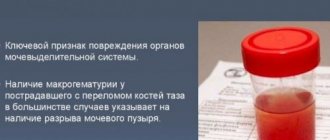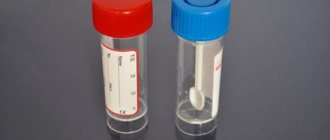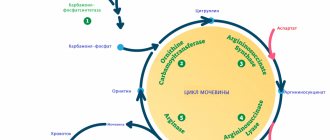An increase in blood sugar in diabetes mellitus inevitably leads over time to serious complications: damage to the eyes, kidneys, nervous system, feet, and joints. A sharp jump in glucose levels threatens coma. Therefore, it is extremely important to constantly monitor this indicator and try to keep it at values close to normal.
How often should you measure your blood sugar?
Your doctor can answer this question accurately. Here are some general recommendations:
- People with type 1 diabetes need to measure their glucose levels several times every day: before meals, before bed, and sometimes after meals.
- For people with type II diabetes, it is usually sufficient to measure the value once a day. It's better to do this at different times.
If you get a new job where you will have to work a lot physically, decide to lead a more active lifestyle, go on a trip, if you get sick, you need to carry out monitoring more often. Be sure to visit your doctor and get advice.
How to measure sugar levels?
To determine your glucose level, you need a drop of blood from your finger. It is obtained using special pens (also called lancets). They have a spring inside, thanks to which the puncture is carried out very quickly and almost without pain. In modern pens, you can adjust the depth of the puncture, focusing on the thickness of the skin.
Check your blood sugar levels at home yourself:
- Wash and dry your hands thoroughly.
- Insert the scarifier into the pen.
- Adjust the puncture depth.
- Place the pen on your finger and press the button. It is better to puncture the pad a little from the side. With the central part of the fingertip a person touches objects when he feels them.
A drop of blood from your finger is applied to a special test strip. There are two main types of test strips. Some of them change color when they react chemically with glucose. By checking the color of the strip with a special scale (usually located on the packaging), you can approximately determine the sugar level. This method is not accurate enough.
Another type of strip is used only in conjunction with a glucometer. This is a small device with a screen that displays the exact glucose level. You need to insert a strip into it and place a drop of blood.
Each glucometer model requires its own type of test strips - others will not work. Ask your doctor which one is best for you.
Modern devices for self-monitoring of blood sugar levels
Determining blood glucose levels is one of the most common tests performed by clinical diagnostic laboratories. In addition to various laboratory methods for analyzing glucose levels, there are a large number of portable devices that operate on the principle of “dry chemistry”. We are talking about so-called glucometers, which allow you to carry out this procedure at home. The choice of device in each individual case depends on many objective and subjective factors, which are discussed in this article.
Historical reference
More than 100 years ago, it was discovered that eating carbohydrates increases the amount of sugar in the urine, and people with diabetes mellitus (DM) were advised not to eat foods containing carbohydrates as a treatment. The only method of monitoring the effectiveness of such restrictions was frequent determination of sugar levels in the urine using Benedict's reagent, a solution containing copper sulfate, citric acid and sodium carbonate. To carry out a qualitative analysis, it was necessary to add 8 drops of urine to 5 ml of the reagent in a test tube and boil the solution, holding it directly over the fire for 2 minutes. In this case, urine glucose was oxidized, as a result of which the intensity of the blue color of copper sulfate decreased, the color of the solution changed, and a colored precipitate formed. Color and sediment were indicators of urine glucose levels. A clear blue color without sediment indicated the absence of glucose, while changes in color - from green with a yellow sediment to deep orange or red - were directly related to the amount of sugar in the urine.
Determination of the level of glycosuria became most popular after the discovery of insulin in 1921 and was subsequently used in the treatment of diabetes. However, until 1941, that is, until Walter Compton and Maurice Treneer invented the first chemical test with a dry reagent in the form of Clinitest reagent tablets, there was no simpler way to control glycosuria. The tablets contained the same reagent as in the Benedict test, but in dry form with the addition of sodium hydroxide. The liquid needed to trigger the reaction was urine. The tablet was dropped into a small amount of urine in a test tube and an immediate reaction occurred, producing enough heat to cause it to boil. The glucose in the urine was oxidized, and the blue color of the copper sulfate was reduced, causing the solution to change color from blue to green to yellow and orange. The semi-quantitative result was assessed by visual comparison of the resulting color with the standard scale.
The first test strips with a “dry reagent” were demonstrated in 1956. We are talking about the Clinicix system - a test strip for determining glucose in urine. All necessary reagents (glucose oxidase, peroxidase and chromogen) were encapsulated in the porous strip base. The same enzyme principle was used in the 1964 development of Dextrostix, a disposable test strip for semi-quantitative blood glucose testing. The main component of the dry reagent contained three layers: a supporting layer, a reflective zone and a reacting zone. The water necessary to start the reaction was contained directly in the component under study (blood, plasma, serum, urine). The color obtained as a result of the reaction could be assessed visually by comparing it with a printed reference color scale. This allowed semi-quantitative analysis, the result of which depended largely on the user's ability to correctly compare the color of the test field with the sample. Many patients with diabetes who have vision problems could not correctly evaluate the results obtained, especially if there was a slight transition from blue to green.
Urinary glucose test strips are still used as a screening method and very rarely as a diagnostic method to adjust diabetes treatment. Despite the low cost of determining the level of glucosuria, this method does not allow prescribing high-quality treatment for diabetes, since it does not make it possible to detect hypoglycemia, and the results of the analysis depend on many factors affecting the renal excretion of glucose in the patient.
Considering the difficulties of qualitative subjective analysis of glycemic levels using visual test strips in patients with vascular and neurological complications of diabetes, manufacturers have developed devices for assessing changes in the color of the test strip.
Reflectometers
Reflectometers appeared in 1969 and were introduced by Bayer AG. They measured the reflected light from a colored test strip and converted the signal into a quantitative expression of glucose concentration. The first instruments were heavy and bulky, required manual calibration, and the test strip had to be rinsed and blotted before being placed in the instrument. The main advantage of these glucometers is that the measurement results were no longer semi-quantitative and, despite the wide analytical range, measurement errors that depended on the user’s ability to visually assess the color of the strip were excluded. However, the problem of misinterpretation of results was still present if the examiner did not scrupulously follow all manufacturers' instructions during the test. Thus, it was up to the user to comply with the rules for storing strips, programming the code, and obtaining a drop of blood of the required size (about 50 μl). It was also quite difficult to adhere to the time frame for applying a drop of blood to the test strip and the technique of erasing it from the test field before determining the color. If the test strip was not placed correctly in the meter, the test results would be unpredictable. These glucometers were designed in such a way that a chemical reaction to the test field occurred after placing the test strip in the glucometer, which subsequently required mandatory monitoring of the cleanliness of the optical zone of the device.
Nowadays, reflective glucose measurement systems are compact, easy to use and require minimal user intervention, which minimizes subjective errors. The use of new technologies (the color analyzer is placed under the test strip) eliminated the need to wipe off blood from the strip. Devices with automatic time counting appeared, and the amount of a drop of blood required for analysis was reduced to 1–2 μl. In addition, glucometers began to automatically warn the user about possible errors when measuring glycemia.
Biosensors
Biosensors appeared in the late 80s. last century and became the first generation of test strips using an “indelible” system for determining glycemia. A biosensor is a bioelectrochemical transducer that, together with a portable analyzer, registers the electrical signal produced during a biochemical reaction. Many devices use test strips with a sensor that includes an enzyme that very specifically accelerates the process of glucose oxidation and a mediator involved in the redox reaction.
The first glucose sensor, ExacTech (MediSense), used an electrode containing glucose oxidase as an enzyme and ferrosene as a mediator. The test field of the sensor consisted of two electrodes in the form of conductive “tracks”:
- bioactive working electrode containing glucose oxidase and ferrosene;
- a second electrode that functions as an auxiliary electrode and a reference electrode simultaneously.
The latest model sensors have three electrodes: reference, base and trigger, where the third electrode prevents high concentrations of uric acid, ascorbic acid and paracetamol from influencing the glucometer readings by “subtracting” electrons from the metabolites of the listed substances. The presence of excess (compared to normal) content of these compounds may slightly increase the level of glycemia.
When a drop of blood is placed on the test field, glucose is oxidized to gluconolactone and the glucose level decreases. The released electrons are absorbed by the mediator ferrosene, and the resulting compound is oxidized at the electrode. The flow of electrons is proportional to the blood glucose level.
A drop of blood in biosensors is applied to an electrode outside the device itself and does not come into contact with the internal component of the glucometer.
Principles of glucose measurement
The first chemical tests were too nonspecific, since they measured not only glucose but also other sugars and required the application of a very large drop of blood. Today, the measurement is more specific and less influenced by other sugars. Three enzymes are currently used to measure glycemia:
- glucose oxidase;
- hexokinase;
- glucose dehydrogenase.
The glucose oxidase method is more susceptible to the influence of various drugs and other endogenous blood components than both other methods.
Glucometers
The table shows reflex and biosensor systems for measuring glucose registered in Russia. When used correctly, according to the manufacturer's recommendations, all of them generally reflect fairly accurate blood glucose levels.
The criteria for choosing a device depend on the frequency of its use by the patient, the cost of the device and test strips, as well as other factors, which include: the size of the device and display, type of batteries and ease of replacement, ease of use, availability of memory, warranty service. In addition, the following factors are taken into account.
Blood volume
Over the years of using glucometers, the volume of blood required to correctly determine glycemic levels has decreased significantly. The first generation test strips required at least 50 µl of blood; in the latest generation glucometers this volume is less than 2 µl. The user should be aware that some blood glucose meters or sensors may give low results if the blood drop is not large enough. In addition, the result will be erroneous if an additional drop of blood is applied to the test field if the first sample was insufficient.
In practice, patients often confuse the two main methods of blood collection. The first is when blood is dripped onto a strip - in which case the volume of blood usually must be controlled by the person measuring it. The second (capillary) is when, when touching a strip inserted into the glucometer, a drop of blood is itself absorbed in the required volume, while the glucometer “knows” when to start measuring and when to finish it. That is why the first method requires up to 50 µl, and the best samples of the second method require 0.3–3 µl. Some patients, without reading the instructions, try to drip blood, as they have long been accustomed, onto the sensor strip and a week later they come to replace the glucometer, despite the complete working order of the device.
Thus, it should always be taken into account that if the measurement procedure is performed correctly, any glucometer will give an adequate result.
Expiration date of test strips and their storage
Test strips are individually packaged or placed in a special tube that usually contains silica gel (a desiccant) to prevent excess moisture from affecting the reagent. The user must ensure that the test strip container is closed immediately after removing the strip, as remaining test strips must be stored at a specified temperature and not exposed to excessive heat or cold. Although test strips are stable at room temperature and have a shelf life of about two years, improper storage can accelerate the deterioration of the reagent, causing incorrect blood glucose readings. Test strips should not be used if they have exceeded their expiration date. It is also important to know that after opening the tube, the shelf life of the strips, as a rule, does not exceed 3-4 months; for the Accu-Chek Active and Accu-Chek Go test strips - up to 1-1.5 years (regardless of moment of opening the tube).
Effect of hematocrit
When the blood plasma interacts with the dry reagent of the test strip, it wets the dry chemical agents, which initiates the reaction. This mechanism is influenced by hematocrit when whole blood is used. Blood samples with a high hematocrit or increased viscosity may affect the rate or amount of plasma absorbed and mechanically impede glucose diffusion, resulting in underestimation of glycemic values. Accordingly, a sample with a low hematocrit overestimates the blood glucose level.
Limitation of use
The correct procedure for applying the blood sample to the test strip must be used with each test, so blood glucose meters that use whole blood are not suitable for some patients. Such glucometers cannot be used in patients with hyperosmolar hyperglycemia, since glycemic values may be significantly underestimated.
Please note that some medications and other substances specified by the manufacturer may affect the interpretation of measurement results. Reflective or biosensor glucose meters that use the glucose oxidase method of measuring glycemia are affected by high levels of blood lipids or bilirubin, paracetamol, vitamin C or uric acid.
Safety or Cross Contamination
The safety of using the device does not directly affect the performance of glycemic measurements, but the health of the patient and medical staff may be subject to cross-infection during the analysis. Safety is especially important when using a device on multiple patients (eg in a hospital setting), where you need to be sure that the selected device and lancets are the most appropriate for the situation and do not transmit infection. Medical staff should change test strips and, if necessary, clean the test zone of the device between blood glucose measurements in different patients, which is especially important when using glucometers in specialized children's hospitals to eliminate the risk of cross-infection.
Instrument calibration
Although blood glucose meters and sensors are calibrated by the manufacturer, users should also be aware of the calibration information for each pack of test strips or electrodes. Typically, code changes are manually made to the program using a special code button on the device. Because calibration has a significant impact on blood glucose results, manufacturers have attempted to minimize operator error when manually changing the code in the following ways:
- information about the code is in the test strip; the glucometer “reads” it independently;
- Each batch of test strips has a calibration key that is inserted into the meter;
- Each batch of test strips contains calibration strips to transfer the necessary information to the meter.
Almost all blood glucose meters use capillary whole blood to measure blood glucose levels. Devices calibrated with whole blood will produce different glycemic values than those obtained with a meter calibrated with plasma, which should be kept in mind when interpreting your results.
Subjective factors influencing measurement results
Glucometers are widely used by both patients and healthcare professionals, ranging from nursing staff to professional diabetologists, and test results depend on the operator's ability to follow the manufacturer's instructions. Devices for personal use should be characterized by a minimum number of manipulations and be easy to use to reduce the likelihood of incorrect blood glucose measurements. Before recommending a particular device for home use, it is necessary to determine the patient’s capabilities and skills in performing this type of manipulation. Below are some of the most common features of blood glucose testing that help minimize operator error and improve the quality of your blood glucose measurements. Systems that do not require blood removal are characterized by the lowest number of operator errors.
Advantages of modern glucometers that eliminate user error:
- minimal user participation;
- applying calibration information to an electronic chip or calibration strip;
- minimum blood volume;
- capillary blood sampling;
- automatic counting of measurement time;
- no need to wipe off blood from the test area of the strip;
- electronic warning about user errors;
- mandatory quality control of the measurement procedure.
Glucometer Glucochrome M
Specifications:
- measurement ranges - 2.2–22 mmol/l;
- power supply - 2 batteries with a voltage of 1.5 V;
- permissible external conditions - 15–35°C, up to 75% relative humidity;
- measurement principle: photometric;
- analysis time - 2 min;
- calibration - whole capillary blood;
- sample - fresh capillary blood from a finger;
- memory - 15 values;
- dimensions - 50 x 130 x 18 mm;
- weight - 95 g (including battery);
- control of operation - using control strips included in the kit of the Glucochrome M device;
- Contents: device with battery, case, test strip, instruction manual.
Advantages of Glucochrome D test strips:
- designed for both visual and automatic assessment of the result;
- assessment colors are well defined and readable thanks to the separated reactive field;
- color stability after the reaction leaves enough time to evaluate the result;
- relatively low cost of test strips and the opportunity to receive them for free in some Russian cities.
Flaws:
- the measurement results depend on the user’s ability to strictly follow the operating rules of the device;
- test strips are packaged in a tube; storage conditions for open packaging should be carefully observed;
- the analysis requires a large drop of blood - 10 μl;
- It is necessary to erase a drop of blood from the test field of the strip after 1 minute. after application;
- The optical zone of the device requires cleaning.
Glucose meter Glucocare
Specifications:
- measurement ranges - 2.2–25 mmol/l;
- power supply - 3 batteries with a voltage of 1.5 V (GP A 76);
- permissible external conditions - 15–30°C, humidity less than 85%;
- measurement principle: photochemical;
- analysis method - glucose oxidase-peroxidase reaction;
- analysis time - less than 1 minute;
- calibration - whole blood;
- sample - fresh capillary blood from a finger;
- memory - 150 values;
- dimensions - 101 x 50 x 15 mm;
- weight - 58 g (including batteries);
- performance control - control strips;
- equipment - device, test strips (2 pcs.), pen for pricking the finger, 8 lancets, instructions;
- Warranty period - 3 years.
Advantages:
- memory for 150 analyzes with date and time indication;
- There is an interface to the computer.
Flaws:
- strips should be stored at a temperature of 5 - 30 ° C, in a dry place protected from direct sunlight;
- strips must be used within 3 months. after the first opening of the tube;
- Avoid direct sunlight on the test strip when performing the analysis;
- the influence of hematocrit and cholesterol and triglyceride levels on study results;
- taking orally or injecting large doses of vitamin C underestimates the true glucose concentration;
- Dehydration and kidney dysfunction may also affect test results.
Glucometer Elta-Satellite
Specifications:
- measurement ranges - 1.8–35 mmol/l;
- power supply - 1 CR 2032 battery, voltage 3V;
- measurement principle - electrochemical;
- analysis time - 45 s;
- calibration - whole capillary blood;
- sample - fresh capillary blood from a finger;
- memory - 40 values;
- dimensions - 110 x 60 x 25 mm;
- weight - 70 g;
- control of operation - using the control strip included in the device;
- coding - manually;
- complete set - device with battery, strips in individual packaging (10 pcs.), case, control strip, instruction manual;
- The warranty period is unlimited.
Advantages:
- electrochemical measuring principle;
- does not require blotting of test strips and control of measurement time;
- each test strip is packaged in a separate sealed bag;
- a drop of blood is applied outside the device;
- Each device is covered by an unlimited warranty;
- economical due to its affordable price and the use of inexpensive test strips.
Flaws:
- a large drop of blood is required - at least 5 µl;
- There is no protection system against incorrect measurement procedures.
Glucometer One Touch Profile
Specifications:
- measurement ranges - 0–33.3 mmol/l, higher results are displayed on the screen as the inscription “Hi”;
- power supply - 2 alkaline batteries, size AAA, voltage 1.5 V;
- permissible external conditions - 15–35°C, humidity 0-90% (without condensation), hematocrit 25–60%;
- measurement principle: photometric;
- analysis time - 45 s;
- calibration - whole blood;
- sample - fresh capillary blood from a finger;
- memory - 250 values;
- dimensions - 109 x 66 x 30 mm;
- weight - 127.5 g (including battery);
- control of operation - using the control solution included in the device kit;
- coding - manually;
- equipment - device with battery, test strips (10 pcs.), Penlet Plus piercing pen, Fine Point lancets, control solution, case;
- Warranty period - 5 years.
Advantages:
- the test strip does not require wiping a drop of blood;
- the results obtained can be marked with the corresponding names of “events” (on an empty stomach, before breakfast, after breakfast, etc.);
- when you turn on the device for the first time, the average value of the results for 14 days appears on the screen;
- there is a function “Insulin Information”;
- You can view average results for 15 possible “events” on the screen, as well as the average blood test result for the last 30 days;
- connecting the cable allows you to transfer information stored in the device’s memory to a computer for further processing using a special computer program.
Flaws:
- it is necessary to wash the test strip holder from blood;
- it is necessary to wipe the optical zone of the test from blood;
- Applying an insufficient volume of blood is a mistake in conducting the study.
Glucometer One Touch Basic Plus
Specifications:
- measurement ranges - 0–33.3 mmol/l, higher results are displayed on the screen as the inscription “Hi”;
- power supply - 2 alkaline batteries, size AAA, voltage 1.5 V;
- permissible external conditions - 15–35°C, humidity 0–90% (without condensation), hematocrit 25–60%;
- measurement principle: photometric;
- analysis time - 45 s;
- calibration - whole blood;
- sample - fresh capillary blood from a finger;
- memory - 75 values;
- dimensions - 109 x 66 x 30 mm;
- weight - 116.2 g (including battery);
- control of operation - using a test strip and control solution included in the device kit;
- coding - manually;
- equipment - device with battery, test strips (10 pcs.), pen for piercing Penlet Plus, Fine Point lancets, control solution, case, instructions and a brief test procedure;
- Warranty period - 5 years.
Advantages:
- the test strip does not require wiping a drop of blood;
- connecting the cable allows you to transfer information stored in the device’s memory to a computer for further processing using a special computer program.
Flaws:
- it is necessary to wash the test strip holder from blood;
- it is necessary to wipe the optical zone of the test from blood;
- Applying an insufficient volume of blood is a mistake in conducting the study.
Glucose meter One Touch Ultra
Specifications:
- measurement ranges - 1.1–33.3 mmol/l;
- power supply - 1 lithium battery with a voltage of 3 V (No. 2032);
- permissible external conditions - 6–44 ° C, humidity 10-90%, hematocrit 30–55%;
- measurement principle - electrochemical;
- analysis method: biosensor glucose oxidase;
- analysis time - 5 s;
- calibration - blood plasma;
- sample - fresh capillary blood from a finger, shoulder or forearm;
- memory - 150 values;
- dimensions - 79 x 57 x 21 mm;
- weight - 2.5 g (including battery);
- control of operation - using the control solution included in the device kit;
- coding - manually;
- equipment - device with battery, test strips (10 pcs.), pen for piercing One Touch Ultra Soft, replaceable cap One Touch Ultra Clear for obtaining a drop of blood from the shoulder/forearm , One Touch Ultra Soft lancets, control solution, soft sports case, instructions in Russian and warranty card;
- Warranty period - 3 years.
Advantages:
- the analysis result can be obtained in just 5 seconds;
- capillary blood sampling - only 1–2 μl. A change in the color of the test strip will confirm that the blood volume is sufficient to obtain an accurate result;
- touching the test strip does not affect the measurement result;
- the test area is located outside the device, so blood does not enter the device;
- You can choose the puncture site - hand or finger. Using a special One Touch Ultra Clear cap with a One Touch Ultra Soft piercing pen allows you to get a drop of blood not only from your finger, but also from your arm (shoulder or forearm);
- stores the results of 150 tests in memory, indicating the date and time of the test. Calculates the average result for 14 and 30 days;
- calibrated using blood plasma, so the analysis result is comparable in accuracy to the result obtained in the laboratory;
- a computer user can connect a glucometer to it and use the In Touch LifeScan program to process data on a PC. A special wire is supplied with the device. The program can be downloaded free of charge from the LifeScan website on the Internet.
Flaws:
- an opened bottle of test strips must be used within 3 months. After this period, the strips are unusable;
- high cost of the device and test strips.
Glucometer SmartScan
Specifications:
- measurement ranges - 1.1–33.3 mmol/l;
- power supply - 2 batteries No. 357 based on silver oxide with a voltage of 1.5 V;
- acceptable external conditions - 15–35°C, humidity 10–90%, hematocrit 30–55%;
- measurement principle - electrochemical;
- analysis method: biosensor glucose oxidase;
- analysis time - 15 s;
- calibration - blood plasma;
- sample - fresh capillary blood from a finger;
- memory - 150 values;
- dimensions - 79 x 57 x 19 mm;
- weight - 45.4 g (including battery);
- control of operation - using the control solution included in the device kit;
- coding - manually;
- equipment - device with battery, test strips (10 pcs.), Penlet Plus piercing pen, Fine Point lancets, control solution, soft sports case, instructions in Russian;
- warranty period - 3 years;
Advantages:
- allows analysis using a small drop of blood measuring 2.5 μl;
- capillary method of blood sampling;
- test strips are reliably protected and can be touched anywhere on the strip;
- calibrated using blood plasma for easier comparison with laboratory results;
- stores the results of 150 tests in memory, indicating the date and time and automatically calculating the average result for 14 days;
- The test area is located outside the device, so blood does not enter the device.
Flaw:
- high cost of test strips.
Accu-Chek Active glucometer
Specifications:
- measurement ranges - 0.6–33.3 mmol/l;
- power supply - 1 lithium battery type CR2032;
- permissible external conditions - 10–40°С, humidity 0–85%;
- measurement principle: photometric;
- analysis time - 5 s;
- calibration - whole blood;
- sample - fresh capillary blood;
- memory - 200 values;
- dimensions - 115 x 40 x 22 mm;
- weight - 45 g (without battery);
- performance control - control solution;
- coding - code plate;
- equipment - device with battery, 10 test strips, Accu-Chek Softclix finger pricking pen, 10 Accu-Chek Softclix lancets, case, instructions in Russian;
- Warranty period - unlimited.
Advantages:
- has the function of measuring blood glucose levels obtained from alternative places: forearm, shoulder, palm of the thumb, thigh or calves;
- capillary method of blood sampling;
- blood drops less than 2 μl;
- there is an automatic on/off function;
- additional memory functions: values indicating the time and date of measurement. Calculation of average values for 7 and 14 days;
- wireless data transfer to a PC via infrared;
- unlimited warranty period.
Flaws:
- galactosemia, ketoacidosis, dehydration, increased bilirubin levels (up to 20 mg/dl), as well as the administration of solutions of oligo- or monosaccharides, ascorbic acid, solutions containing icodextrin, can lead to an incorrect result.
Glucose meter Accu-Chek Go
Specifications:
- measurement ranges - 0.6–33.3 mmol/l;
- power supply - 1 lithium battery type CR2030 or DL2430;
- permissible external conditions - 10–40°С, humidity 0–85%;
- measurement principle: photometric;
- analysis time - 5 s;
- calibration - whole blood;
- sample - fresh capillary blood from a finger;
- memory - 300 values;
- dimensions - 113 x 46 x 22 mm;
- weight - 55 g (without battery);
- performance control - control solution;
- coding - code plate;
- equipment - device with battery, 10 test strips, Accu-Chek Softclix finger pricking pen, 10 Accu-Chek Softclix lancets, 1 Accu-Chek Softclix device attachment, case;
- Warranty period - unlimited.
Advantages:
- capillary method of blood sampling;
- the ability to obtain a drop of blood from alternative sites (for example, shoulder, forearm);
- there is no direct contact of the device with blood;
- the presence of a mechanism for removing the test strip from the device ensures that there is no direct contact with blood or the used test strip;
- turns on and off automatically, results are also saved automatically;
- “alarm clock” function: you can set the sound signal to sound three times at different times of the day;
- Hypoglycemia Alert: You can set both a visual and an audible alarm to alert you when your blood glucose levels are unusually low.
- memory for 300 results (along with the date and time of the analysis);
- infrared interface for transmitting data to a personal computer or laptop on which a program for analyzing the results is installed (Accu-Chek Pocket Compass software);
- You can calculate the average of your blood glucose results over the past 7, 14, or 30 days;
- unlimited warranty period.
Flaw:
- high cost of the device and test strips.
Glucometer Ascensia Elite
Specifications:
- measurement ranges - 1.1–33.3 mmol/l;
- power supply - 2 lithium batteries with a voltage of 3 V (CR2030 or DL);
- permissible external conditions - 10–40°С, automatic temperature compensation using built-in thermal strips, humidity 20–80%;
- measurement principle - electrode-sensor technology;
- analysis time - 30 s;
- calibration - whole blood;
- sample - fresh capillary blood from a finger;
- memory - 20 values;
- dimensions - 81 x 51 x 14 mm;
- weight - 50 g (without battery);
- operation control - test strip;
- coding - using a code test strip;
- equipment - device with batteries, 5 test strips, Microlet finger pricking device, 5 lancets, test strip, case, instructions, warranty card;
- Warranty period - 5 years.
Advantages:
- electrode-sensor technology for measuring glycemia;
- capillary method of blood sampling;
- volume of a drop of blood—2 μl;
- automatic on/off function;
- the device does not have a single button, so it is very easy to learn and use;
- Each test strip is hermetically sealed, the use of one strip does not affect the shelf life of the remaining strips.
Flaws:
- small amount of memory;
- there is no interface to the computer.
Glucometer Ascensia Entrust
Specifications:
- measurement ranges - 1.7–30.6 mmol/l;
- power supply - 1 lithium disk battery with a voltage of 3 V (CR2032);
- acceptable external conditions - 18–38°C, hematocrit 30–55%;
- measurement principle - electrode-sensor technology;
- analysis time - 30 s;
- calibration - whole blood;
- sample - fresh capillary blood from a finger;
- memory - 10 values;
- dimensions - 100 x 58 x 21 mm;
- weight - 64 g;
- operation control - control strip;
- coding - electronic chip;
- equipment - device with battery, 5 test strips, code card, control strip, microlet finger pricking device, 5 lancets, case, user manual, quick guide;
- Warranty period - 5 years.
Advantages:
- electrode-sensor technology for measuring glycemia;
- capillary method of blood sampling;
- automatic on/off function;
- large strip field - easy to insert into the device and comfortable to hold in your hand;
- two-step measurement procedure;
- relatively low cost of the device and test strips.
Flaws:
- small amount of memory;
- there is no interface to the computer.
Glucometer Ascensia Confirm
Specifications:
- measurement ranges - 0.6–33.0 mmol/l;
- power supply - 1 lithium disk battery with a voltage of 3 V (CR2025);
- permissible external conditions - 10–40°C, humidity 10–80%;
- calibration - whole blood;
- sample - fresh capillary blood from a finger;
- memory - 100 values;
- dimensions - 110 x 75 x 17 mm;
- weight - 50 g;
- coding - manually;
- equipment - device with battery, 10 test strips, Microlet finger pricking device, 5 lancets, instructions;
- Warranty period - 5 years.
Advantages:
- the device is equipped with a disk containing 10 test strips at once;
- capillary method of blood sampling;
- blood drop volume - 3 µl;
- average glycemic value for 14 days;
- ability to connect to a computer.
Flaw:
- high cost of the device.
Glucometer Super Glucocard 2 (Super Glucocard II)
Specifications:
- measurement ranges - 1.1–33.3 mmol/l;
- power supply - 2 lithium batteries with a voltage of 3 V (CR2032);
- measurement principle - electrochemical;
- analysis time - 30 s;
- calibration - plasma/serum;
- sample - fresh capillary blood from a finger;
- memory - 20 values;
- dimensions - 51 x 87 x 14.5 mm;
- weight - 45 g;
- operation control - control strip;
- coding - coding strip;
- equipment - device with battery, 10 test strips, coding strip, control strip, Multilancet finger pricking device, 10 lancets, case, instructions.
Advantages:
- capillary blood sampling;
- the ability to apply a drop of blood to the test strip outside the device;
- blood drop volume - 3 µl;
- the device has no buttons;
- automatic on/off function;
- Each test strip is packaged in a separate sealed bag.
Flaws:
- small amount of memory;
- there is no interface to the computer.
N. Yu. Arbatskaya, Candidate of Medical Sciences, City Clinical Hospital No. 1 named after. N. I. Pirogova, Moscow
What other tests should a diabetic take?
To keep diabetes under control, measuring blood glucose levels alone is not enough. There are other tests:
- Glycated hemoglobin. This test is performed in a laboratory. It is advisable to get tested every 3-4 months. Glycated hemoglobin reflects the average blood glucose level over the past 2-3 months. An increase of more than 6.5% indicates an increase in glucose levels.
- Urine glucose level. Normally, glucose is not detected in a general urine test. It appears when its level in the blood reaches 10 mmol/l or more. If you constantly monitor your blood sugar, then there is little point in testing your urine. And yet the doctor can prescribe it.
- Level of ketone bodies in urine. These substances are formed as a result of the breakdown of adipose tissue with a significant increase in blood glucose levels. Their determination helps to detect decompensation of diabetes mellitus in a timely manner and take action. There are special test strips to determine the level of ketone bodies in urine.
- Level of protein in urine. This test must be taken once every 6 months for type I diabetes, once a year for type II diabetes.
Make an appointment with an endocrinologist to learn more about managing your blood sugar and living with diabetes. Call by phone +7 (495) 308-39-92
Urine analysis with test strips (U-strip)
Indications:
- Urinary tract infection detection and control
- Detection of non-infectious urinary tract diseases and monitoring their course
- Detection of glycosuria in certain patient groups, such as pregnant women and diabetics
Analysis using test strips allows you to measure up to 10 different parameters simultaneously:
- Glucose
- Ketone bodies
- Specific gravity
- Red blood cells
- pH
- Protein
- Nitrites
- Leukocytes
- Bilirubin
- Urobilinogen
GLUCK
Glycosuria occurs when the glucose content in the urine exceeds the reabsorption capacity of the kidneys. Threshold values for glycosuria are usually blood glucose values of 8.3-10 mmol/L. In older people and patients who have had diabetes for years, this threshold is often higher.
Analysis method: Glucose oxidase + peroxidase reaction
Reference value: Negative
Interpretation of the result:
- Diabetes. Used for early detection of diabetes and monitoring its progress. The absence of glycosuria does not exclude the presence of glucose metabolism disorders or diabetes. It should be taken into account that glycosuria can also occur in other conditions.
- Renal glycosuria. If the reabsorption threshold of the renal tubules is significantly reduced, then glucose can be found in the urine even when the blood glucose level is normal. Glycosuria often occurs in pregnant women (5-10%) and disappears after childbirth.
- Nutritional glycosuria. May occur after eating large amounts of carbohydrates.
- Glycosuria accompanying renal failure. Occurs when kidney function decreases to 30% of normal. It can also be observed in acute renal failure.
- False negative results: salicylate metabolites in large quantities.
- False Positives: Cleaning Chemicals
KETONE BODIES
Ketone bodies (acetoacetate, alpha-hydroxybutyrate and acetone) appear in the urine as a result of increased lipid breakdown when carbohydrates do not provide sufficient energy, such as in diabetic ketoacidosis, strenuous exercise, fasting, inflammatory bowel disease and vomiting.
In diabetics, a similar finding indicates metabolic decompensation. Occurs, as a rule, in a precomatous and comatose state.
It is not of decisive importance during a screening study, but is a necessary analysis for patients suffering from diabetes, pregnant women with toxicosis and patients in acute condition (especially children) during their examination and monitoring of treatment. The method is very sensitive; mild ketosis can be detected after an overnight fast.
Method of analysis: Acetoacetic acid and acetone react with sodium nitroprusside and glycine to form a purple-colored complex. The reaction is specific to these two ketones. Alpha-hydroxybutyrate does not react with sodium nitroprusside.
Reference value: Negative
Interpretation of the result:
Ketone bodies can appear in urine under the following conditions:
- Starvation
- Protein-rich diet
- Vomit
- Infection that occurs with an increase in temperature
- Congenital metabolic diseases
- False-positive results: phenylketones and phenylphthalein, captopril and other substances containing a sulfhydryl group
SPECIFIC GRAVITY
The specific gravity of urine directly depends on the amount of fluid consumed; low temperature, certain medications, and increased sweating also affect it.
Method of analysis: Determination of ion concentration. Non-ionic particles such as glucose and urea are not measured.
Reference value: 1.010-1.030
Interpretation of the result:
- An important parameter when interpreting the results obtained using test strips is the determination of narcotic substances and doping. A low specific gravity may indicate a sample has been tampered with.
- A sample with a low specific gravity with a borderline positive result is given greater clinical significance than a sample with a large specific gravity.
- In a sample with a specific gravity of <1.010, the cells contained in the urine disintegrate more quickly and microscopy of the sediment may give a false negative result.
- Specific gravity is not suitable for assessing the concentrating ability of the kidneys.
erythrocytes
Hematuria occurs in many pathological conditions, so it is always necessary to find out the reason for a positive test result.
Method of analysis: Hemoglobin and myoglobin, having peroxidase properties, change the color of the indicator. The reaction is sensitive to both hemoglobin and myoglobin.
Reference value: Negative
Interpretation of the result:
- Red blood cells appear in the urine during prerenal, renal and postrenal disease; the cause can also be increased physical activity.
- Myoglobin appears in the urine during muscle necrosis and myositis.
- Test strip analysis can be positive even if no red blood cells are detected microscopically. This may happen if the red blood cells were lysed after the analysis was taken or while still in the body, and also if the analysis was late.
- Most common causes of hematuria: Urinary tract stones
- Tumors
- Glomerulonephritis
- Pyelonephritis
- Coagulation disorders
- Myoglobinuria occurs with muscle injury or necrosis (for example, during physical activity, burns, progressive muscle diseases).
- False-positive results: microbial peroxidase, oxidizing detergents, menstrual blood contamination.
pH
Urine pH ranges from 5 to 9. Concentrated morning urine is usually acidic. In children, urine is often alkyl, that is, alkaline. Bacteria raise the pH of urine by metabolizing urine into ammonia.
Method of analysis: The reaction of urine is determined using a mixture of three indicators - methylene red, bromothymol blue and phenolphthalein.
Reference value: 5-7
Interpretation of the result:
- In alkaline and non-concentrated urine, the preservation of leukocytes is significantly reduced (typical of urinary tract infections in children). Also, in alkaline urine, the cylinders quickly die.
- The pH of urine is affected by: nutrition, fasting, medications, poisoning, and various diseases.
PROTEIN
Proteinuria is a common nonspecific symptom of kidney disease. The detection of protein in urine should always be followed by a careful differential diagnosis.
Method of analysis: Color reaction based on changes in pH. Test strips for urine analysis are sensitive to albumin content, starting at a concentration of 0.06 g/l. For early detection of damage to the renal glomeruli, albumin in urine is determined by the immune method.
Reference value: Negative
Interpretation of the result:
- Benign proteinuria - occurs more often in people under 30 years of age. Causes: physical activity, emotional stress, orthostasis, lordosis, hypothermia, pregnancy, use of vasoconstrictors. Benign proteinuria is variable. The protein content in the first portion of morning urine is normal. This makes it relatively easy to distinguish benign proteinuria from a symptom of the disease.
- Extrarenal proteinuria - can occur in acute diseases: colitis, convulsions, heart attack, stroke, postoperative period, fever.
- Renal proteinuria is caused by increased permeability of the glomerular membrane. Usually constant, regardless of circadian rhythms.
- Postrenal proteinuria - with inflammation of the bladder or prostate gland, as well as bleeding from the urinary tract.
- False negative results: globulins, immunoglobulin light chains.
- False-positive results: disinfectants containing an ammonium group.
NITRITES
Nitrites are formed in urine from nitrates by the action of the enzyme nitrate reductase, which is produced by most Gram-positive uropathogenic microorganisms.
Reference value: Negative
Interpretation of the result:
- Detection of nitrites in urine is one of the important signs of urinary infection. Enterococci and staphylococci do not produce nitrate reductase and the test for nitrite content will be negative, regardless of the presence of bacteria in the urine. A prerequisite for a positive analysis may be the consumption of such an amount of plant food that nitrates enter the urine and the urine remains in the bladder for a long enough time (4-8 hours).
- A single negative result does not exclude a urinary tract infection. If infection is suspected, microbiological testing should be performed regardless of the nitrite test result.
- False-negative results: the subject did not eat plant foods, short incubation period in the bladder, Gram-positive bacteria, sample left for more than 4 hours.
- False-positive results: sample contamination.
LEUCOCYTES
Test strips detect granulocyte esterase activity and also detect destroyed neutrophils that cannot be identified by microscopic examination of the sediment. The method does not detect lymphocytes.
Interpretation of the result:
- The appearance of leukocytes in the urine is an important symptom indicating an inflammatory process in the kidneys and urinary tract. Causes may include: Infections
- Glomerulopathies
- Poisoning
- Bladder emptying problems
- Tumors
BILIRUBIN
When conjugated with glycuronic acid, bilirubin becomes water-soluble and is excreted from the body through the kidneys.
Method of analysis: Bilirubin forms a complex with diazonium salt
Reference value: Negative (<3.4 μmol/L)
Interpretation of the result:
- In all pathological conditions, when the content of conjugated bilirubin in the blood increases, it can also be excreted in the urine in significant quantities (for example, with damage to the liver parenchyma, cholestasis, cholangitis, cholecystitis)
- Today, due to the availability of blood tests, the determination of bilirubin in urine has lost its previously important significance in the diagnosis of liver diseases.
- False-negative results: exposure of the sample to light, vitamin C in large quantities.
- False-positive results: drugs that turn urine red.
UROBILINOGEN
Urobilinogen is formed in the intestines under the influence of bacteria from bilirubin secreted in bile. After this, it is resorbed back into the blood, broken down in the liver and partially excreted in the urine.
Method of analysis: Urobilinogen forms complexes with diazonium salt. The method is specific for urobilinogen.
Reference value: Negative (<17 μmol/L)
Interpretation of the result:
- There are two possible reasons for the appearance of urobilinogen in the urine: Liver disease
- Intensive breakdown of hemoglobin (hemolytic anemia, pernicious anemia, intravascular hemolysis, polycythemia)









